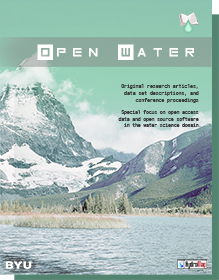Article Title
The AquaCrop-VHM model combination to simulate catchment hydrology in agricultural areas
Abstract
While distributed hydrological models require large datasets and extensive calibration, conceptual hydrological models can predict catchment hydrology with acceptable accuracy using only few inputs and parameters. However, conceptual models often simplify the simulation of the water content in the unsaturated zone as some process dynamics related to crop growth and evapotranspiration are typically disregarded. Therefore, conceptual models have limitations to accurately assess the effect of agricultural management and climate change on catchment hydrology.
In this research, a new modeling tool to simulate hydrological processes in agricultural catchments was developed by combining the crop water productivity model AquaCrop, with the lumped conceptual hydrological model VHM. The developed tool is freely available and can be applied to simulate both crop (water) productivity and water availability in any agricultural catchment. Moreover, since a relatively small number of explicit parameters and mostly-intuitive input variables are required, the tool is applicable even in data-scare regions.
The AquaCrop-VHM model combination is established by linking the simulated soil water balance of AquaCrop to the different flow components (overland flow, interflow, baseflow) that are simulated by VHM. This enables simulation of crop production at field scale as well as discharge at the catchment outlet. The AquaCrop-VHM model link was developed and tested for an agricultural catchment in Belgium. Moreover, new case-studies will be set up to prove the applicability of the model to assess the effect of field management on both crop productivity and catchment hydrology in semi-arid, data-scarce areas.
BYU ScholarsArchive Citation
Van Gaelen, H.; Willems, P.; Diels, J.; and Raes, D.
(2015)
"The AquaCrop-VHM model combination to simulate catchment hydrology in agricultural areas,"
Open Water Journal: Vol. 3:
Iss.
1, Article 17.
Available at:
https://scholarsarchive.byu.edu/openwater/vol3/iss1/17
